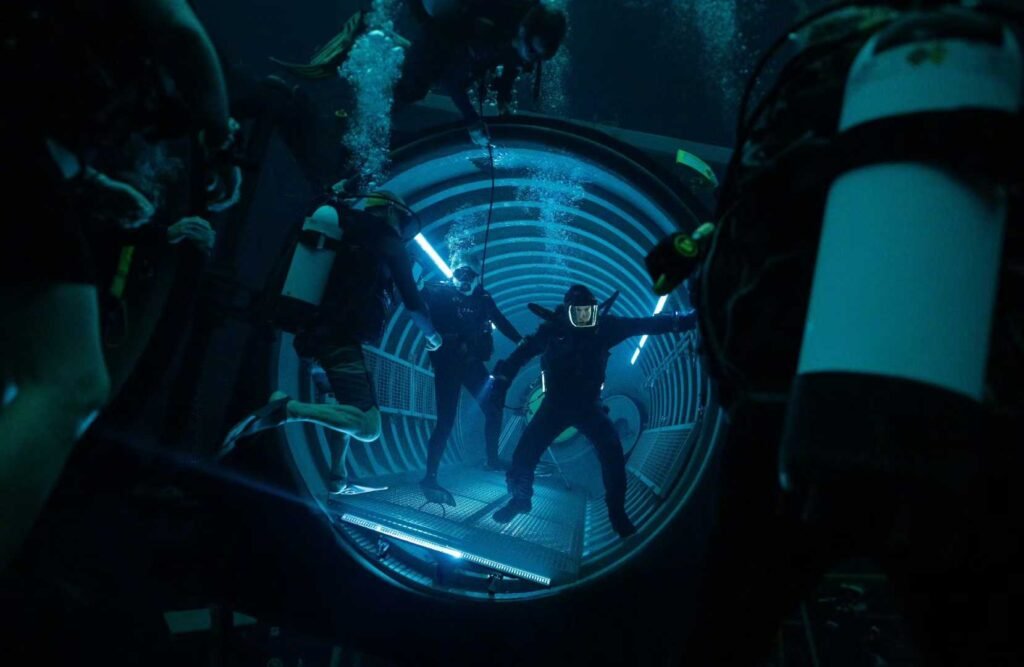When an old man past his prime decides to go winter swimming.

Maybe it’s because my expectations were already low enough, but beyond the visceral stir when the theme music kicked in, I actually found myself liking this final chapter—just a bit.
With this film, Tom Cruise has completely equated his career with the Mission: Impossible series.
In the first installment, he was still fresh-faced, like a handsome boy unaware of his own charm, performing purely in service of the plot. By the second film, he reportedly had only one request for director John Woo: “Make me look cooler.” That attempt—style over substance—gave the film such a stylized feel that it drifted away from the tone of the series, and ended up being the least appreciated by fans. (This latest film flashes back to clips from previous installments, but almost none from M:I-2, which speaks volumes—it’s practically been exiled from the franchise.)
Gradually, Tom found his shortcut to success: real stunts, risking his life. And he kept pushing that limit for nearly 30 years.
Eventually, Pretty Boy Tom was no longer pretty. Time spares no one. His face could no longer support the old “handsome Tom” filter, and most of the time, he simply couldn’t fight the way he used to.

You could tell from the very beginning of the film—when Ethan and Grace finally untie the ropes, the camera quickly cuts to Grace’s face. In previous films, this kind of beat would surely lead to a brutal fight sequence. This time, it switches to an “objective” perspective: Ethan’s face is bloodied; the fight is already over. For a moment, I thought, Is he really too tired to fight now? Is the whole movie going to rely on these lazy workarounds?
Then… the old man goes “winter swimming.”
What started as a foreshadowing—a jump into the ocean from a helicopter—leads into the true centerpiece of the film: a solo mission into an abandoned deep-sea submarine, where he battles darkness and freezing waters. This 30-minute sequence, to me, captured the essence of the entire film even more than the climactic airplane fight.
Why?
First, in M:I-6, Tom had already had a mid-air brawl with Superman. And the “plane cling” stunt was already legendary back in M:I-5.
Second, for Ethan/Tom now, the ultimate mission isn’t to defeat a villain—it’s to fight alone, and to surpass his former self.
This evolution—from the aesthetics of action to the fate of the character—mirrors what’s happening off-screen too.
Originally scheduled for back-to-back releases in 2021 and 2022, parts 7 and 8 were delayed repeatedly. The plan to shoot them together was scrapped, and the script underwent multiple rewrites. Time waits for no one, and Tom had to wrap this series up while he could still move.
Within the film, the deep-sea sequence wasn’t just the emotional climax—it was physically distinct from anything else in the series. I’ve never experienced such intense physical discomfort in an M:I film before.
There were always moments—like leaping between skyscrapers or getting launched off a motorcycle—but this time, the suffocating sensation was intentionally prolonged. The loneliness and despair were raw and new. It felt like Tom was purposefully draining himself—and I couldn’t help but feel for him.
Of course, this brings up the film’s most obvious flaw: the emotion was laid on too thick. The soundtrack constantly reminded you, this is a farewell. It had to be epic. It had to be moving. Like a school essay titled “My Final Bow—Please Be Touched.”
Whether the franchise continues or not, Mission: Impossible has already carved out its place in cinematic history.
